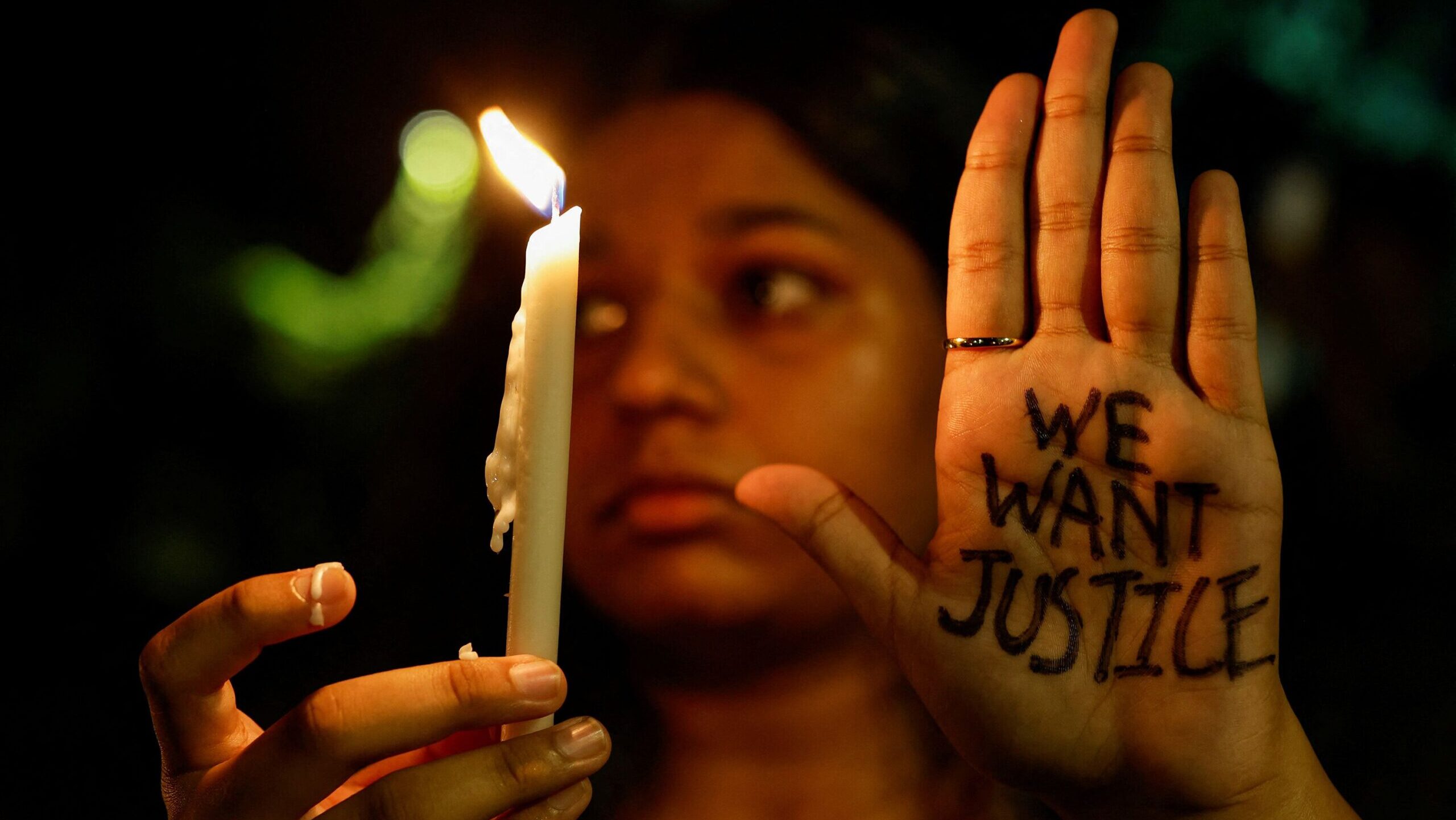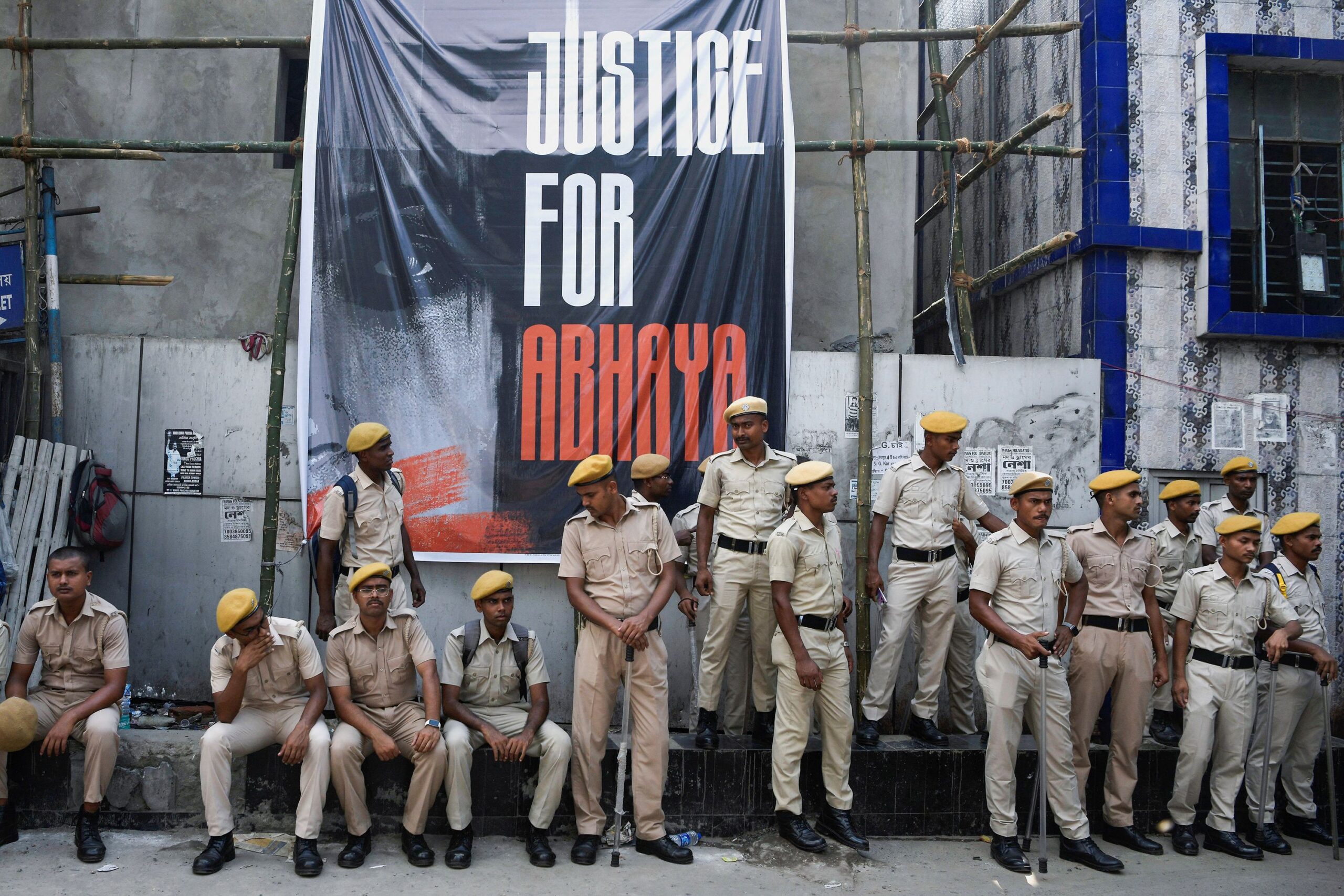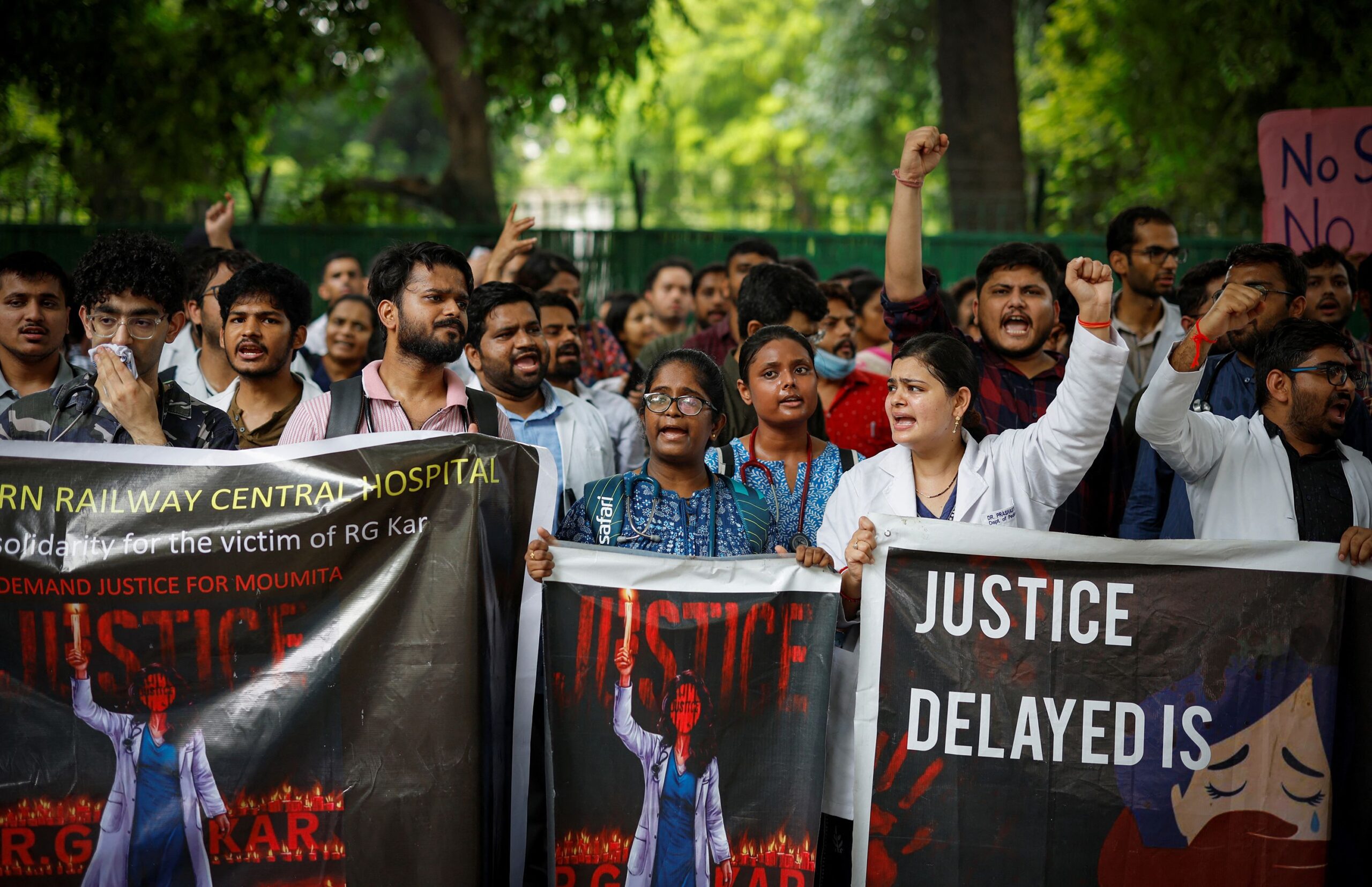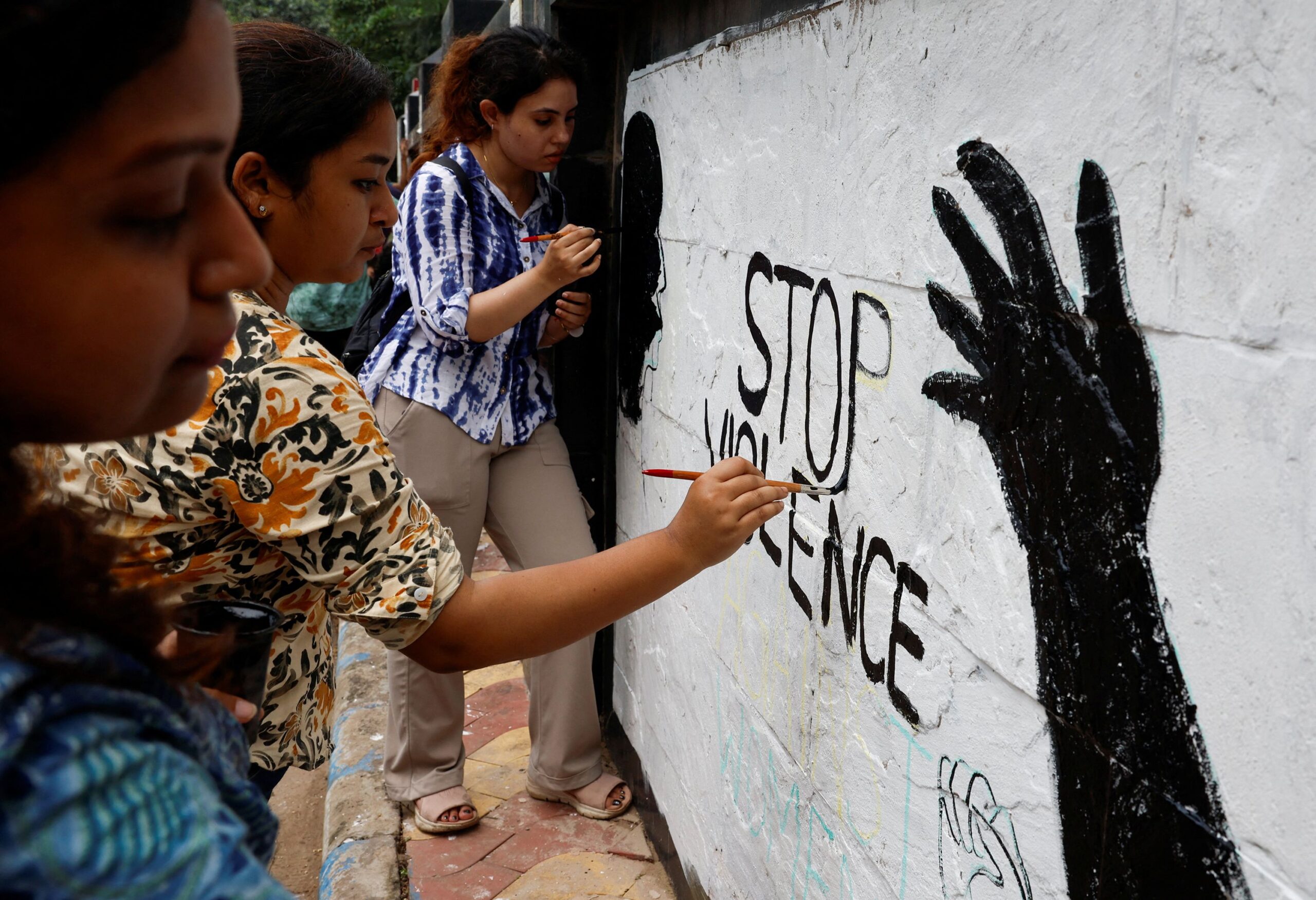
Delhi, India — On August 15, as India prepared to celebrate its 78th Independence Day, thousands of people took to the streets across the state of West Bengal, to protest women’s lack of freedom from sexual violence and harassment.
There had been other protests before (less than two days before the Independence Day marches, thousands of doctors went on strike) and there’ve been many more since – all sparked by the brutal rape and murder of a 31-year-old trainee doctor in West Bengal’s capital, Kolkata, on August 9. By Indian law, rape victims cannot be named.
India has been here before. In December 2012, the gang rape and murder of a 23-year-old medical student shocked the nation and drew out thousands demanding both justice and change.

December 22, 2012: Thousands of students gathered in front of the Presidential Palace in New Delhi after the brutal rape and murder of a 23-year-old woman who became known as 'Nirbhaya'. Daniel Berehulak/Getty Images
Justice came for Nirbhaya – as the 23-year-old became known – when all five people (four adults and one juvenile) responsible for her death were found guilty. But despite the creation of the Nirbhaya Fund in 2013, through which the government makes several hundred million dollars available to fund initiatives that improve the safety of Indian women, change has been more elusive.
One of the Independence Day protestors told Indian newspaper The Telegraph that there are “a wave of protests” after such high-profile rapes. “But the atrocities against women do not stop,” the protester said.
The most recent stats from India’s National Crime Records Bureau show that 31,516 rape cases were reported in 2022. That’s an average of 86 reports of rape a day.
Ahead of the next hearing of the Kolkata case at India’s Supreme Court on September 17, CNN takes another look at how rape is addressed by India’s institutions and asks experts: is enough being done for rape victims and to deter sexual violence?
Problems with policing
In the days following the discovery of the doctor’s body in a seminar hall of the government hospital where she worked, the Supreme Court stated that it had taken local police “almost 14 hours” to file a First Information Report (FIR). The report is a critical first step in India’s criminal justice process. In cases of rape, Indian law requires the police to file an FIR immediately after an incident has been reported. Until one is lodged, an investigation cannot begin.
Other failures with the handling of the August 9 rape investigation have been alleged by the Central Bureau of Investigation (CBI), the National Commission for Women, and by the victims parents.
Appearing in court on August 22, Solicitor General with the CBI Tushar Mehta said, according to the Hindustan Times: “The most shocking fact is that the FIR was lodged…after she was cremated. First, the parents were informed that she wasn’t well, and then they were told she had committed suicide. It was only on the insistence of her colleagues and friends that a medical examination was done.”
Legal counsel for the West Bengal government and the Kolkata Police maintained in court that day that “all investigation was done in accordance with law,” as reported by the Indian Express. Responding to CNN’s questions about the case, Kolkata Police Commissioner Vineet Goyal said: “It may not be proper to comment on the case as it is now being investigated by CBI and monitored by Supreme Court of India. We are supporting CBI to ensure the victim, and her family gets justice. We did a professional and transparent investigation in the limited period we were investigating.”

On the day of a nationwide strike called by the Indian Medical Association on August 17, police officers gather outside medical college in Kolkata, where the 31-year-old trainee doctor was killed. Avijit Ghosh/Reuters
There are other accounts of long delays in initiating investigations into reports of sexual violence across India. In the eight days between August 16 and 23 alone, there were at least three stories in India’s English language press about public grievances with how the police had responded to allegations of sexual violence. In one instance, the father of a 17-year-old girl who was allegedly gang raped told media the police wouldn’t file the FIR but instead chastised him for not keeping his daughter at home.
“Instead of writing the complaint down and immediately catching the criminals, an officer at the police station kept scolding me for not confining my daughter to the house. He said girls shouldn’t be allowed to go out,” the father, who was unnamed, told the Telegraph.
Acknowledging the complaint made by the girl’s family, the police superintendent, Gyanendra Singh, told the same newspaper: “We have registered a case based on the complaint and arrested one of the accused. We will act against the (local) policemen if the allegation is found correct.”
Audrey D’Mello, Director at Majlis, a non-profit organization which offers legal counselling to women and children facing sexual and domestic violence, told CNN that police delays are something they hear about all the time. Over the past 10-12 years, of the 2,500 rape cases Majlis had worked on, D’Mello said FIRs were delayed in 90% of them.

Doctors shout slogans during a protest on August 19, demanding justice following the rape and murder of a trainee doctor at a government-run hospital in Kolkata, India. Adnan Abidi/Reuters
Beyond these delays, she described hostility towards victims of rape: “For the victim, it takes a lot of courage, determination” to go to the police station. Yet once there, “they are humiliated, made to wait, questioned time and again,” while the police pass “moral judgments.”
This response by the police can, in part, be put down to a lack of adequate training. PM Nair, a former police officer who served in the Central Bureau of Investigation for 10 years, told CNN that, in his view, only 20% of officers are trained in handling sexual assault cases, and called this a huge vacuum.
Nair, who is now on the executive committee of Indian Police Foundation, echoed D’Mello’s comments about procedural delays, saying that while delays filing first information reports were common with other crimes too, it is mostly found in cases dealing with crimes against women and children “because the investigation is lengthy, and they (the victims) are voiceless.”
Yogita Bhayana, founder of People Against Rapes in India told CNN that in regular interactions with the police she found that the “investigating officer, on whom the case relies, could not answer basic questions on the Standard Operating Procedures”. The procedures outline how to treat a victim of the crime, collect evidence and safeguard the crime scene.
CNN reached out to the Ministry of Home Affairs, responsible for law and order, about these claims but did not receive a response.
Police training – and its limits
After Nirbhaya’s rape and murder, there has been more attention on and funding “to…educate (the police and state prosecutors) to remain sensitive while dealing with cases related to crime against women,” as one course developed by the Bureau for Police Research and Development is described.
These workshops, provided by various agencies and non-profits, have made some difference in the major cities where, according to Bhayana who provides police training in Delhi, officers now have a better understanding of the gravity of the crime. But in small towns and villages, she said police attitudes remained rife with misogyny.
Overall, she told CNN the impact of training programs is limited: “A two-hour training, to about 40 personnel who don’t pay much attention, will not make a change.”
It is however not enough that male officers receive gender sensitivity training, CNN was told by various experts. Police departments also need more female officers – not least because the Ministry of Home Affairs’ “Standard Operating Procedure for the investigation and prosecution of rape cases against women,” issued in 2020, states that the first information report should be “recorded by …any woman officer”. At last count, there were just 214,000 women police officers in all of India – approximately 15% of the total police force.
A backlog in the courts
In 2022, there were 198,285 cases of rape awaiting trial. By the end of the year, only 18,517 had been completed. In other words, over 90% of cases in that year were still awaiting resolution, according to a report by the non-profit Commonwealth Human Rights Initiative. This backlog in trial courts, visible over multiple years, denies the victim justice or even closure.
After Nirbhaya, there was a push for so-called Fast Track Special Courts. Currently there are 343 of them (excluding courts for crimes against children) and experts CNN spoke to say more are needed, suggesting – as we are now seeing with the Kolkata case – that more crimes against women should be heard by the High Courts, which will go some way to restoring faith in India’s institutions.
Of the cases that are heard in court, a high percentage are thrown out. In 2022, the acquittal rate in rape cases was at 65.14%. There are a few factors that Venkatesh Nayak, Director of the Commonwealth Human Rights Initiative said lawyers have pointed to, which include witnesses turning hostile, survivors deciding to no longer pursue long-drawn-out cases, poor investigative work by the police and inadequate forensic evidence collected.
But D’Mello also believes that harsher punishments introduced after Nirbhaya (the minimum sentence has risen from seven to10 years) may be having an adverse effect, as judges become reluctant to imprison someone where there might be reasonable doubt. “If police is doing shoddy investigation, or not meeting the requirement the court is looking for,” the courts would not “take the risk to put that person behind bars,” she said.

August 19: Medics paint slogans inside Kolkata Medical College and Hospital demanding and end to violence after the rape of their peer on August 9, 2024. Sahiba Chawdhary/Reuters
Mixed results for One Stop Centres
Perhaps the most significant program introduced after 2012 was the One Stop Centre, which aims to provide women affected by violence with temporary shelter, help deal with the police, medical and legal aid, and counselling. To date, according to government data, 765 centers are operational across India and the program, which began in 2015, has assisted over 900,000 women.
A case worker at one of Delhi’s 11 One Stop Centres, who spoke to CNN on condition of anonymity, told CNN that especially for women from lower economic backgrounds, the centers provide a safe space in the way that police stations or lawyers’ offices do not. But she said police only regard them as shelters and case workers have no real power: “One Stop Centre is there but the police do not have much information (about the program), or I should say, we don’t have any power. We can’t say anything to them, nor do they listen to us.”
One report highlights that many survivors of violence are also either unaware of the existence these centers or don’t know how to access their facilities.
There are money problems too but, ironically, just about 40% of the money allocated by central government has been used. -And it’s not just money allocated to these vital centers that remains unspent. Some of the money in the Nirbhaya Fund – about 25% of the amount available – has itself not been used.
In a written response to a question asked by a member of parliament, the Ministry of Women and Child Development, in charge of the Nirbhaya Fund, essentially passed responsibility for the fund’s use back to state administrations, saying the fund was “demand driven.” Aside from suggesting that individual states had not yet filed their accounts (“hence it is possible that more funds have actually been utilized”) the Ministry also blamed bureaucracy and the Covid-19 pandemic for the underspend.
Culture change, the elephant in the room
Despite available funding for program or new legislation, “incidence of crime against women cannot be controlled unless the people’s mindsets change” was the conclusion drawn in 2021 by the Indian government’s own public policy think tank, NITI Aayog.
Bhayana of People Against Rapes in India agreed and called for gender sensitization in the school curriculum. “It’s not just about respecting a woman in your family, your mother, sister, it’s about respecting the stranger next door as well,” she said.
As the various experts told CNN, India’s institutions need to do more to keep women safe, ensure survivors of sexual violence feel heard and have access to justice. But unless wider society also changes, this comment made in 2015 to the BBC by one of the defence lawyers in the Nirbhaya case will be continue to be proven true: “In our culture, there is no place for a woman.”



